Walking through this city that thrived thousands of years ago and was lost until recently is amazing. Even more awesome is knowing there are remains from earlier civilizations underneath this one yet to be excavated!
HISTORY
In these Jordanian mountains is one of the largest ancient Roman cities, Jerash, often called the "Pompeii of the East"
. It was first built by the Romans in 63 B.C.
In the 2nd century BC, Jerash was conquered by Alexander the Great, who built many of the structures I see today.
Remains from civilizations during the Bronze and Iron Ages have been uncovered here.
It is one of the best preserved cities in the Middle East! It includes mosaic-floored churches, grand temples, amphitheaters, public squares, bath houses, marketplaces and colonnaded streets with sculptures and fountains. Colonnaded simply means surrounded or supported by many columns. In my photos you will see many columns.
There is a large arch of triumph with 3 doorways just outside the ancient city. It marked the visit by Emporer Hadrian in 129-130 A.D. This is the way I finally entered the ancient city.
BIBLICAL IMPORTANCE
The Bible speaks of the mountains of Gilead. They are about 30 miles from Amman, the capital of Jordan.
The great days of Jerash (then called Gerasa) came during the rule of the Romans
. In the first century B.C., it became part of the Roman province of Syria. Eventually it joined the league of 10 cities formed by the Romans called the "Decapolis".
Decapolis was mostly pagan in the time of Jesus. But many of the people from there followed Him during His ministry in Galilee according to Matthew 4:23-25.
The city later became Christian (in the Byzantine period). There were about 25,000 citizens then and they built over 20 churches. Ruins of most of the churches can be seen now.
There is no mention that Jesus visited Gerasa (Jerash) itself, but Mark 7:31 talks about Him being in the region.
OLD JERASH
This ancient city was hidden, buried in the sand, for centuries. Then, in 1806, it was discovered. Excavation on the city began in 1925 and continues today!
The excavation revealed a formal and sophisticated Roman city with elegant colonnaded streets, spacious plaza, baths, fountains, grand theaters and impressive temples
.
The colonnaded street, 1/2 mile long, called a 'cardo', runs through the ancient city. A 'cardo' was the Latin name given to a street that ran north-south in ancient Roman cities.
The Cardo was lined with shops and a broad sidewalk. There was even an underground sewage system that ran the full length of the street.
The huge Oval Plaza seems to be the center point of this old city. It is a Roman Forum. The Roman Forums were the center of daily activities such as trading and socializing. Important buildings and theaters were built around the forum.
The Forum is still paved with its original stones and bears the ruts of chariot wheels. The Forum is surrounded by columns from the 1st century. This was the focal point for the entire city. Built in 1 A.D., it is a large circular plaza surrounded by 160 columns.
From the Forum there is a set of stairs that goes to the Temple of Zeus built in 162 A.D., over the ruins of an earlier Roman temple
.
The temple was built on one of the highest points in the entire city. Supposedly this temple was the most beautiful temple of ancient Gerasa (Jerash) with marble paneling and richly decorated statues. It is one of the greatest monuments left of this ancient city.
Halfway up the stairs to the Temple is a tremenos (sacred courtyard) where sacrifices were made at the open-air altar.
Then, from the courtyard more stairs climb to the Temple. This was a magnificent, monumental stairway in it's day, surrounded by 45 foot high columns!
On the way up the stairway to the Temple is where I got a great panoramic photo of the Forum from above.
After the Temple of Zeus, I walked along the Cardo to the South Theater. It seats more than 3,000 people and is still used for concerts.
The South Theater is known for it's amazing acoustics. A person can stand in the arena of the theater and be heard by everyone, without speakers or amplifiers!
I went to the very top seats and got some photos of the arena below
. You can see in the photos how small a person in the arena looks from there. But, amazingly, can still be clearly heard!
Further down the Cardo I found what is called a hippodrome. It was built in the 2nd century to use for horse and chariot races and other sporting events.
It has a seating capacity of 15,000. I was planning to see a reenactment of the Roman Chariot Races, with gladiators and everything. But, it has recently been discontinued because of the drop in tourism due to the terrorists attacks in the region in the neighboring countries.
Decline
Both Persians and Muslims conquered the city in the 7th century. Finally, the city was abandoned in the 8th century following a catastrophic earthquakes in 746 A.D. It was buried in sand until it was discovered in the early 1800's. It was preserved exceptionally well after being buried for hundreds of years.
Modern Jerash
A city wall separates the old and new Jerash. The new city is developing away from the old city in order not to encroach on it and to help preserve it.
NEXT: "Seeing The Promise Land"
Pompeii of the East (Jordan)
Wednesday, August 24, 2016
 Jerash, Jordan
Jerash, Jordan
Other Entries
-
234A World Without Cars (Michigan, USA)
Aug 26364 days prior Grand Rapids, United Statesphoto_camera63videocam 0comment 3
Grand Rapids, United Statesphoto_camera63videocam 0comment 3 -
235"Amazing Katy" (USA)
Sep 07352 days prior Sedalia, United Statesphoto_camera70videocam 0comment 0
Sedalia, United Statesphoto_camera70videocam 0comment 0 -
236"The Longest Flight" (Cambodia)
Sep 12347 days prior Siem Reap, Cambodiaphoto_camera29videocam 0comment 0
Siem Reap, Cambodiaphoto_camera29videocam 0comment 0 -
237Nasty But Nice! (Cambodia)
Sep 23336 days prior Kampot, Cambodiaphoto_camera76videocam 0comment 0
Kampot, Cambodiaphoto_camera76videocam 0comment 0 -
238The "City of the Crab" (Cambodia)
Sep 24335 days prior Kep, Cambodiaphoto_camera66videocam 1comment 2
Kep, Cambodiaphoto_camera66videocam 1comment 2 -
239The "Do-Nothing Island" (Cambodia)
Sep 25334 days prior Kep, Cambodiaphoto_camera24videocam 0comment 0
Kep, Cambodiaphoto_camera24videocam 0comment 0 -
240A Vietnam Christmas!
Dec 22246 days prior Hue, Vietnamphoto_camera33videocam 0comment 2
Hue, Vietnamphoto_camera33videocam 0comment 2 -
241New Years 2016 (Vietnam)
Jan 01236 days prior Hue, Vietnamphoto_camera37videocam 0comment 2
Hue, Vietnamphoto_camera37videocam 0comment 2 -
242The Man On The River (Vietnam)
Jan 02235 days prior Hue, Vietnamphoto_camera33videocam 0comment 6
Hue, Vietnamphoto_camera33videocam 0comment 6 -
243White Horse Country! (Vietnam)
Jan 06231 days prior Hue, Vietnamphoto_camera66videocam 1comment 1
Hue, Vietnamphoto_camera66videocam 1comment 1 -
244"Uncle Ho Takes a Bath" (Vietnam)
Jan 07230 days prior Hue, Vietnamphoto_camera56videocam 0comment 0
Hue, Vietnamphoto_camera56videocam 0comment 0 -
245Is It Delicious? (Vietnam)
Jan 09228 days prior Hue, Vietnamphoto_camera42videocam 0comment 2
Hue, Vietnamphoto_camera42videocam 0comment 2 -
246EXPLOSIONS and FIRES in Cambodia!
Feb 08198 days prior Siem Reap, Cambodiaphoto_camera23videocam 0comment 6
Siem Reap, Cambodiaphoto_camera23videocam 0comment 6 -
247Life on the Water! (Cambodia)
Feb 10196 days prior Siem Reap, Cambodiaphoto_camera48videocam 2comment 4
Siem Reap, Cambodiaphoto_camera48videocam 2comment 4 -
248Lands of Awe and Wonder! (Middle East)
Aug 204 days prior Kuwait, Kuwaitphoto_camera0videocam 0comment 0
Kuwait, Kuwaitphoto_camera0videocam 0comment 0 -
249The Lowest Place on Earth! (Jordan)
Aug 222 days prior Amman, Jordanphoto_camera22videocam 0comment 1
Amman, Jordanphoto_camera22videocam 0comment 1 -
250"The Temple of Hercules" (Amman, Jordan)
Aug 231 day prior Amman, Jordanphoto_camera26videocam 1comment 1
Amman, Jordanphoto_camera26videocam 1comment 1 -
251Pompeii of the East (Jordan)
Aug 24 Jerash, Jordanphoto_camera36videocam 0comment 6
Jerash, Jordanphoto_camera36videocam 0comment 6 -
252"Seeing the Promised Land" (Jordan)
Aug 251 day later Madaba Governorate, Jordanphoto_camera20videocam 3comment 0
Madaba Governorate, Jordanphoto_camera20videocam 3comment 0 -
253STUNNING PETRA! (Jordan)
Aug 262 days later Petra, Jordanphoto_camera51videocam 5comment 1
Petra, Jordanphoto_camera51videocam 5comment 1 -
254"Exploring With INDIANA JONES" (Jordan)
Aug 262 days later Wadi Musa, Jordanphoto_camera46videocam 6comment 2
Wadi Musa, Jordanphoto_camera46videocam 6comment 2 -
255The Hills Above Petra (Jordan)
Aug 273 days later Wadi Musa, Jordanphoto_camera98videocam 10comment 0
Wadi Musa, Jordanphoto_camera98videocam 10comment 0 -
256Camping with the Bedouin's (Jordan)
Aug 284 days later Wadi Rum, Jordanphoto_camera84videocam 4comment 2
Wadi Rum, Jordanphoto_camera84videocam 4comment 2 -
257Walking in "No Man's Land" (Jordan/Israel)
Aug 295 days later Eilat, Israelphoto_camera46videocam 0comment 0
Eilat, Israelphoto_camera46videocam 0comment 0 -
258Who Owns Jerusalem? (Israel)
Aug 295 days later Jerusalem, Israelphoto_camera46videocam 0comment 2
Jerusalem, Israelphoto_camera46videocam 0comment 2 -
259"City of Peace?" Part I (Israel)
Aug 306 days later Jerusalem, Israelphoto_camera70videocam 0comment 1
Jerusalem, Israelphoto_camera70videocam 0comment 1 -
260"City of Peace?" Part II (Jerusalem, Israel)
Aug 317 days later Jerusalem, United Statesphoto_camera79videocam 0comment 0
Jerusalem, United Statesphoto_camera79videocam 0comment 0 -
261"Death On The Mountain" (Masada, Israel)
Aug 317 days later Masada, Israelphoto_camera51videocam 2comment 0
Masada, Israelphoto_camera51videocam 2comment 0 -
262"The Walls Came Tumbling Down" (Jericho)
Aug 317 days laterJerichophoto_camera15videocam 0comment 0 -
263ABRAHAM'S TOMB (Hebron, Palestine)
Sep 018 days laterHebronphoto_camera76videocam 3comment 0 -
264"Little Town of Bethlehem" (Palestine)
Sep 029 days laterBethlehemphoto_camera75videocam 1comment 3 -
265"BETHLEHEM'S WALL" (Palestine)
Sep 029 days laterBethlehemphoto_camera63videocam 3comment 0 -
266"The Announcement in Nazareth" (Israel)
Sep 0411 days later Nazareth, Israelphoto_camera64videocam 3comment 0
Nazareth, Israelphoto_camera64videocam 3comment 0 -
267"JESUS IN NAZARETH" (Israel)
Sep 0613 days later Nazareth, Israelphoto_camera73videocam 1comment 0
Nazareth, Israelphoto_camera73videocam 1comment 0 -
268Tiberias, At The Sea of Galilee (Israel)
Sep 0714 days later Tiberias, Israelphoto_camera81videocam 0comment 0
Tiberias, Israelphoto_camera81videocam 0comment 0 -
269The Sea of Galilee On A Bicycle!
Sep 0815 days later Capernaum, Israelphoto_camera108videocam 1comment 2
Capernaum, Israelphoto_camera108videocam 1comment 2
Comments
2025-05-22
Comment code: Ask author if the code is blank

 Jerash, Jordan
Jerash, Jordan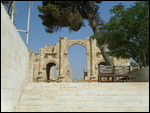

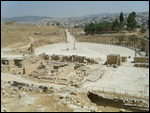
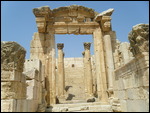
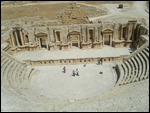






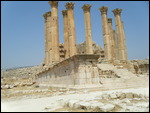
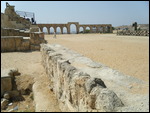
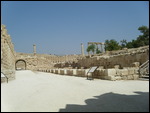
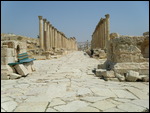
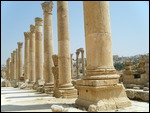
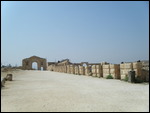
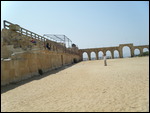
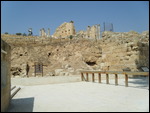
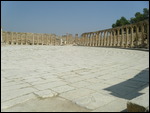

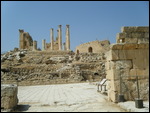
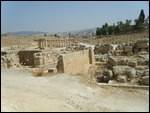
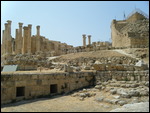
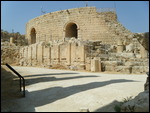
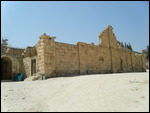
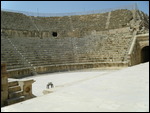

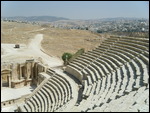
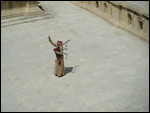

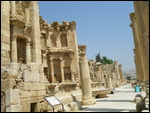
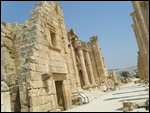
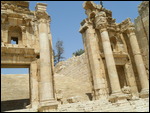
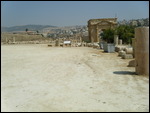
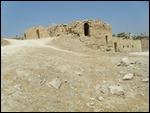
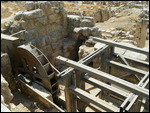

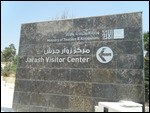
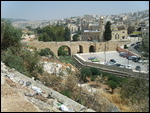
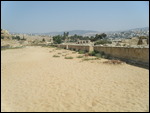
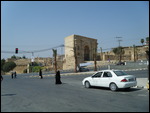
sarah greenfield
2016-10-13
Awesome history, thank you Larry! (still hot here in Texas)
usatexan
2016-10-13
Hi Sarah and Ron. Good to hear from you. Yes, I love the Texas heat also!
Jackie Koop
2016-10-13
The pictures are awesome, can't imagine what it would be like to actually be there. Thanks for sharing. Take care.
usatexan
2016-10-14
This land is something to see for sure. Thanks for reading.
Karla
2016-10-30
Great pictures and history! Surprisingly, we too are still having hot weather. 80's this time of year is almost unheard of.
usatexan
2016-10-31
Yeah, that is warm! Maybe you will have a warm winter. Good to hear from you.